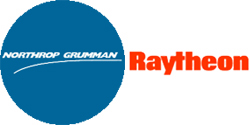
In a somewhat surprising development, the U. S. Air Force turned to two new vendors — Northrop Grumman Corporation and Raytheon — in a November 21 announcement of contracts for the Next Generation GPS Control Segment (OCX).
In a somewhat surprising development, the U. S. Air Force turned to two new vendors — Northrop Grumman Corporation and Raytheon — in a November 21 announcement of contracts for the Next Generation GPS Control Segment (OCX).
Officials from the Space and Missile Systems Center’s Global Positioning Systems Wing announced the award on November 22. Northrop Grumman’s Space & Mission Systems division in Redondo Beach, California, and Raytheon Company’s Intelligence & Information Systems business unit located in of Aurora, Colorado each received 18-months $160 million contracts.
In doing so, they moved future development of the critical ground control segment away from Lockheed Martin and Boeing, which have had responsibility for the operational control segement (OCS) since the GPS system’s launch nearly 30 years ago. Boeing, however, did not compete as a prospective OCX prime contractor but became a member of the Raytheon team, as is ITT Corporation. In turn, Lockheed — which did compete for the primary contract — could conceivably join the Northrop Grumman team to lend its expertise to the other competitor.
The dual award of contracts is designed to reduce the risks of developing OCX and will include a system requirements and system design reviews, and creation of a modernized capability engineering model. These deliverables will support OCX "Key Decision Point B," which follows competitors’ system design reviews and prototype demonstrations scheduled for early 2009. At that milestone the Air Force will down-select to a single prime contractor to continue development of OCX.
According to the SMC GPS Wing, OCX will replace the current OCS, maintaining backwards compatibility with the Block IIR and IIR-M constellation and enabling new modernized capabilities onboard the Block IIR-M and IIF satellites. In addition, OCX will provide command and control (C2) of new capabilities associated with the new GPS III family of satellites.
"The new capabilities provided by OCX will be the cornerstone for revolutionizing GPS C2 and mission capabilities," said Colonel Dave Madden, commander of the GPS Wing, in announcing the award. "OCX will shift the focus of GPS operations from satellite C2, transforming the C2 to user-oriented, effects-based operations, enabling Air Force Space Command to greatly enhance GPS operational services to our nation’s combat forces, civil partners and myriad of domestic and international users."
The first phase of the contract will focus on defining the long-range architecture, technical requirements, concepts of operations, and fielding capabilities incrementally. Issues related to the introduction of future GPS III satellite blocks into the constellation also will be part of the OCX’s first contract phase.
Through its Europe-based subsidiary, Park Air Systems, Northrop Grumman has recently developed and installed the ground-based elements of a certified GNSS for precision approach and landing at Bronnoysund Airport in Norway. The NORMARC 8005 SCAT-I (Special Category I) ground station receives and validates GPS signals and then transmits the calculated signal corrections and flight path data via a VHF data link. SCAT-I avionics systems on-board aircraft use the received signal to improve position accuracy and signal integrity along a defined flight path. One ground station can serve several approaches.
Raytheon’s Airspace Management and Homeland Security (AMHS) business area currently is prime contractor for the Federal Aviation Administration’s GPS Wide Area Augmentation System (WAAS) and is also involved with implementation of India’s GPS Aided GEO Augmented Navigation (GAGAN) system, two satellite-based systems that provide improved integrity and positioning accuracy.
ITT’s Space Systems Division has built the navigation payload for every generation of GPS satellites, but the company is making an effort to become a major competitor in other segments of the GPS program.




